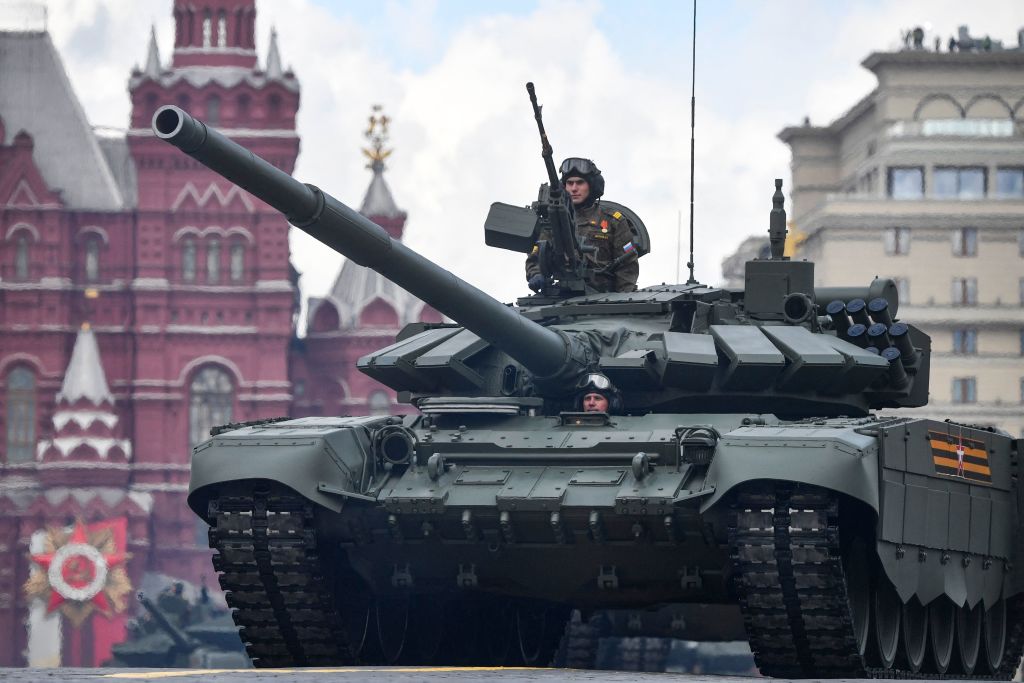Written by Lis Edwards and Clare Fitzgerald.
During the height of the Cold War, the Soviet Union was looking to develop a better tank, as its previous attempts were beginning to not only become costly, but were riddled with issues. What came from this endeavor was the T-72, a main battle tank that has seen continued use by both the Russian military and those abroad since its entry into service in the early 1970s.
A relic of the Cold War
Considered the most widely used battle tank in the modern world, the T-72 has seen service by over 40 countries and throughout a number of conflicts. It was developed from the Soviet T-64 tank and began its service with the Soviet Army in 1973.
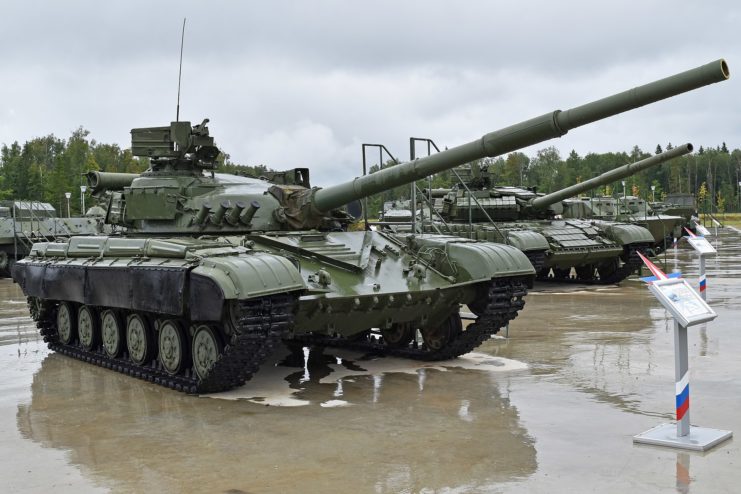
Despite how common the T-72 tank is, many consider it to be an outdated relic of the Cold War. It struggles to hold up against newer technologies, a prime example of which was during the 2003 invasion of Iraq, when US M1 Abrams destroyed Iraqi T-72s in droves.
T-72 tank specs
The T-72 tank is extremely lightweight and small, with The Tank Museum noting its low profile as being its most striking feature. This unique design was achieved by removing the need for a loader and replacing the crew member with an autoloader capable of feeding “the gun at any angle with a separate projectile and charge case.” This means the T-72 requires less standing room that other tanks.
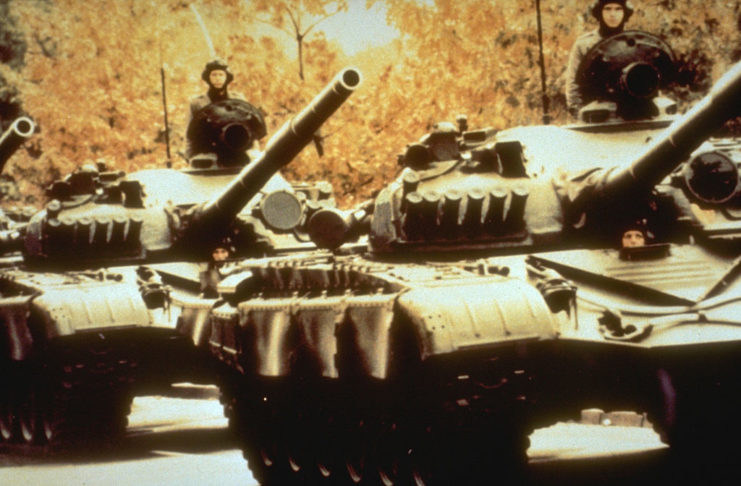
The T-72, while initially equipped with the T-64’s 2A26M2, currently features a 125 mm 2A46 series smoothbore gun capable of firing a variety of rounds, including anti-tank guided missiles, armor-piercing fin-stabilized discarding sabot (APFSDS) long dart penetrators and high-explosive anti-tank (HEAT) rounds. Its secondary armament includes 12.7 mm NSV and 7.62 mm PKT machine guns.
With each variant, a new type of armor is added to the T-72, including an explosive reactive version that reacts upon impact. Between 1973-88, the overall protection level of the T-72’s armor changed from 16 to 37 inches, making the tank extremely difficult to penetrate. It’s also equipped to protect against nuclear, biological and chemical (NBC) attacks.
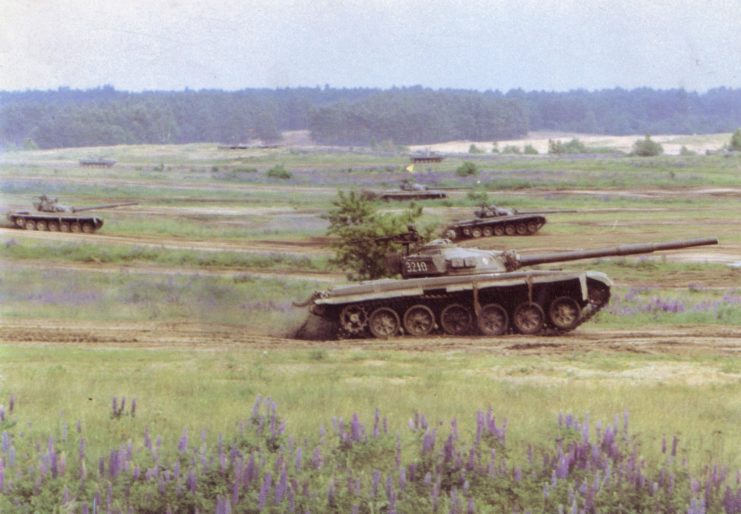
While 25,000 T-72s were developed, the tank isn’t without its issues. Its low stature means there is limited ammunition stowage. As a result, the rounds are unprotected, creating an increased fire risk. The autoloader has also made the main gun’s rate of fire incredibly slow, and the equipment onboard the tank is prone to breaking down.
Use of the T-72 tank throughout the years
The T-72 tank has been used in a number of Russia-involved conflicts, including the Russo-Georgian War, the ongoing War in Donbas, and both the First and Second Chechen Wars. It’s also seen use by other countries, including during the Rwandan Civil War, the Yugoslav Wars and the Algerian Civil War, among others.
During the 1982 Lebanon War, Syrian forces used the T-72 against Israeli forces, with Syrian President Hafez al-Assad calling it “the best tank in the world.” The Syrians’ love for the T-72 continues to be on display with its use in the Syrian Civil War.
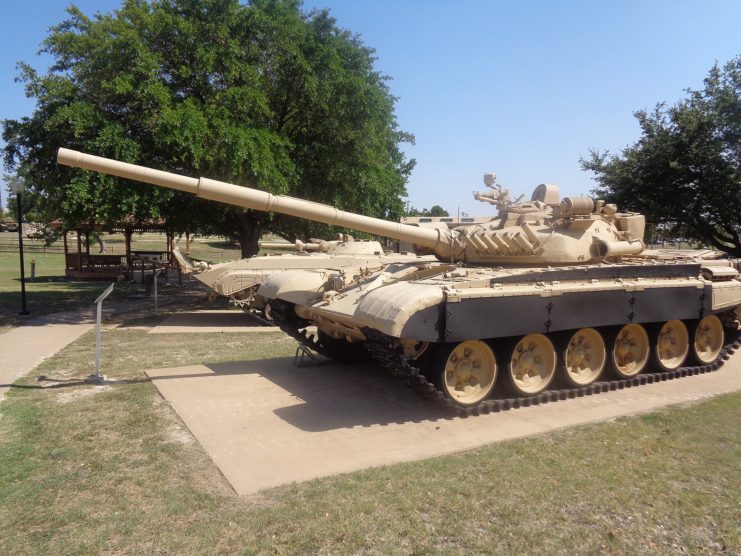
The Iraqi Armed Forces have also made use of the T-72 in numerous conflicts, including during the 1980-88 Iran-Iraq War and the country’s invasion of Kuwait, spurring the Gulf War. During the latter, a locally-produced version of the tank, named the Lion of Babylon, was used. The T-72 also saw action during the aforementioned 2003 invasion of Iraq and the country’s civil war in the mid-2010s.
Russian upgrades to the T-72 tank
The Russian Armed Forces has upgraded the T-72 tank over the years, including the most high-tech version used today: the T-72B3. This variant is outfitted with an automatic tracker for enemy tanks, a ballistic computer, laser range finders with thermal sights, and the capability to launch destructive munitions, such as the AT-11 Sniper, a guided anti-tank missile.
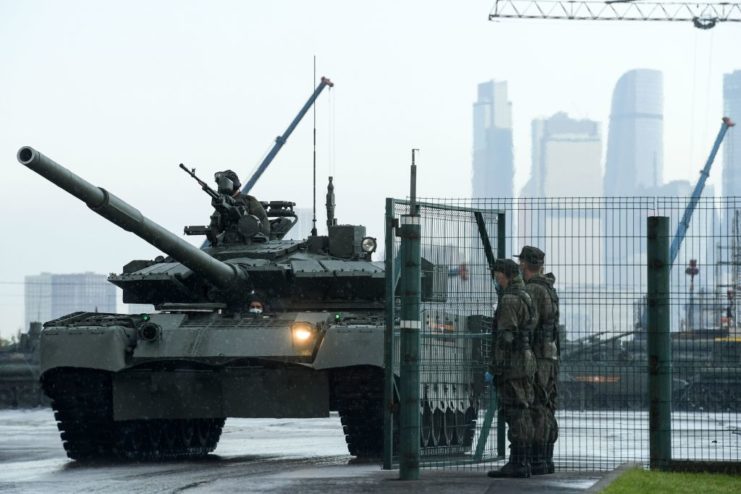
The T-72B3 is protected by Kontakt-5 explosive reactive armor, which protects against anti-tank missiles. The new V-92S2F diesel engine has over 1,100 horsepower, giving the tank a maximum speed of 43 miles per hour. Russia currently has 7,000 T-72s in storage that could easily be upgraded to the T-72B3, if needed.
2022 Russian Invasion of Ukraine
Leading up to the 2022 invasion of Ukraine, Russian forces modified their T-72s with “cope cages,” steel grills fixed to the turret to deter top attack weapons deployed from anti-tank missiles. These modifications have added weight to the tank, made it more visible and more difficult for the crew to escape.
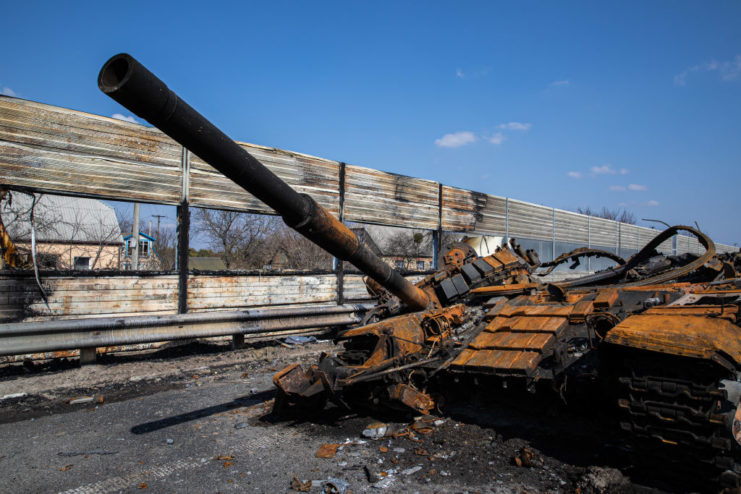
Over the course of the conflict, Ukrainian forces have been decimating the Russian T-72 fleet. As of May 2022, it’s reported that 401 Russian T-72s and just 18 Ukrainian ones have been lost. The Polish government has since donated a fleet of over 200 T-72 Ural tanks, a variant that was modernized during the 1980s. They were donated along with BM-21 “Grad” rocket launchers, self-propelled howitzers and other Soviet-era weaponry the country had stockpiled.
This followed a $4.75 billion deal for Poland to purchase 250 M1A2 Abrams SEPv3 tanks from the United States.
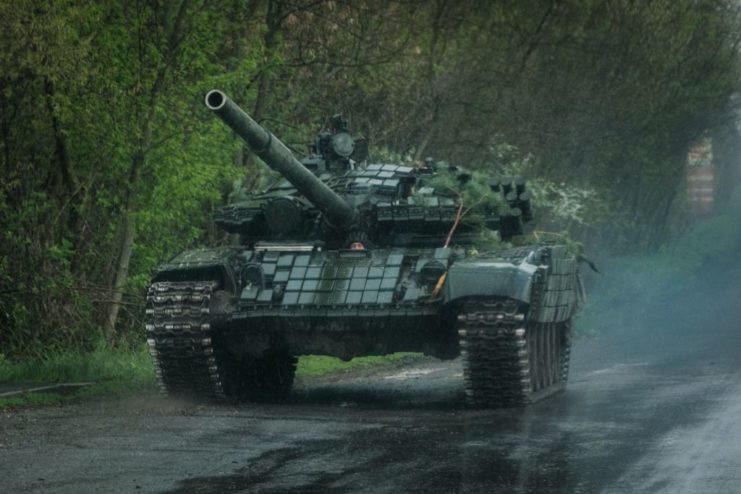
More from us: PzH 2000: One of the Most Powerful Artillery Systems Ever Developed
As the war in Ukraine continues and potential threats of Russian amphibious attack loom in the distance, the T-72 may take on an entirely new role in the conflict – and could possibly change the nearly 50-year-long narrative of Russia’s most prolific tank.
